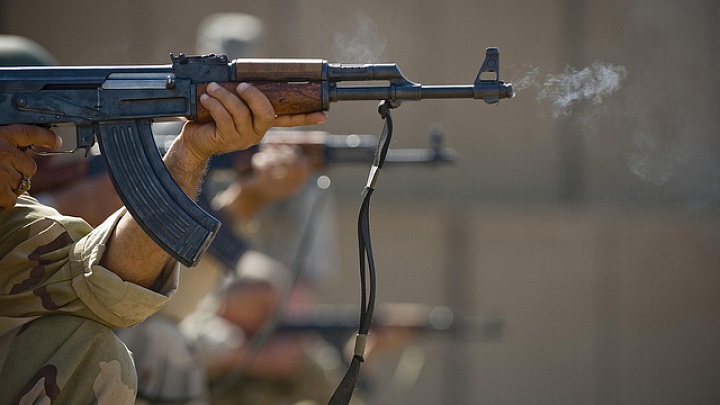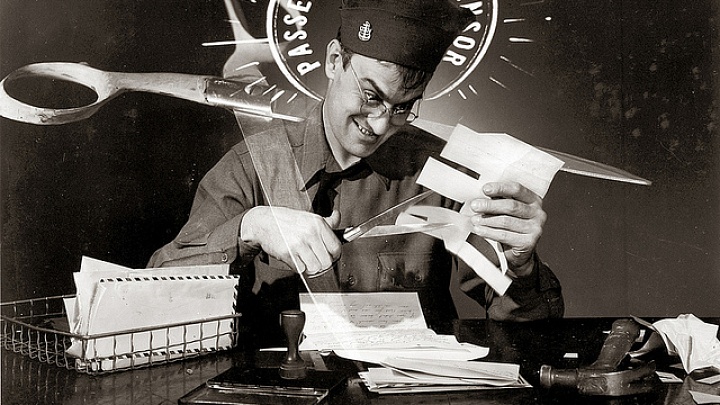
On March 2, a motley assortment of loyalist fighters launched an assault on Tikrit, the birthplace of Saddam Hussein. It was an attempt to recapture the Sunni stronghold from ISIS, which had seized large areas of northern Iraq in summer 2014. While there had been a few half-hearted attempts to take back the city, with as many as 30,000 security personnel committed to the assault, this made it the largest assault on Tikrit and one of the largest operations against ISIS to date. The battle also signaled the changing nature of urban warfare.
The city was captured by early April after a month of heavy fighting. Similar to how the Duke of Wellington’s Anglo-Portuguese force had to bloodily seize Badajoz to open the door for the invasion of Spain in 1812, Iraqi loyalists had to take Tikrit to open up the road to Mosul – Iraq’s second city. In many ways, this battle was just testing the waters and a chance to learn lessons for a much bigger fight to recapture Mosul (which should begin later this year).
The battle for Tikrit was especially remarkable for two reasons. First, it was the source of a substantial rift between the Iraqi government and the Iranian-backed militias. Second, the demand for advanced airpower to cleanly and efficiently prosecute urban warfare was highly evident in this battle, and was a major contributing factor to the rift.
The battle for Tikrit was just testing the waters and a chance to learn lessons for a much bigger fight to recapture Mosul later this year.
Militias Lead the Charge
Surrounding the enemy and cutting them off from the outside world with overwhelming numbers is one of the most crucial initial moves for an attacking force in urban warfare. Not to do this risks the enemy being reinforced and the possibility of a flanking attack, as US forces found in Mogadishu in 1993 during the “Black Hawk Down” incident. The Iraqi loyalists, however, certainly managed this, massing 30,000 security personnel to attack Tikrit from all sides.
But the makeup of this force was not ideal. It included Iraqi army and police, Sunni tribes and the Popular Mobilization Forces, itself made up of dozens of separate militia funded, equipped, and trained by Iran. During the First Battle of Grozny in Chechnya, similar issues of varied command within the Russian force gave way to industrial scale friendly fire incidents, making up a sizeable proportion of the Russian casualties – one estimate places this proportion at over half.
From the available evidence, however, there does not appear to have been any equivalent situation in taking Tikrit. One possible reason for this was the fact that the assault was initially led by the Iranian-backed militias, which benefited from the unified command and considerable experience of the Iranian Quds Force and the simultaneously shadowy and extoled General Qassem Suleimani.
Despite the leadership General Suleimani undoubtedly offered, the predominantly-militia force faced a number of intrinsic challenges. Numbers are all well and good in urban warfare, but in the street-to-street fighting that is necessary, well trained and experienced troops are a requirement. The militias, however, are filled with ordinary Iraqi Shias – many of which are still children – who have had limited training and are limited in the equipment they have.
With such a force, it is understandable that after two weeks of fighting no decisive blow had been struck, especially when ISIS resorted to tactics including suicide bombers, snipers and planting IEDs wherever possible – some of which were reportedly included chlorine gas. It is not surprising that when asked about his thoughts of the assault, Chairman of the Joint Chiefs General Martin Dempsey responded that he was sure that the assault would be successful due to the overwhelming force of the attackers, but that he wouldnt describe it as a sophisticated military maneuver.
Catching a Respite
Between the 16th and 25th of March, Iraqi loyalists halted their assault but maintained their positions. According to the Iraqi government, this was to avoid further damage to the city, as well as avoid civilian casualties and minimize casualties inflicted upon loyalists. Clearly, the assault was not going to plan, but it did also highlight the government’s commitment to avoiding collateral damage.
The government did not want to turn Tikrit into another Fallujah, in which most of the cityscape was destroyed through intense bombardment and combat. From a strategic perspective, it is never conducive, despite possible tactical benefits. But this issue is particularly acute for the current situation in Iraq, with the sectarian dynamic in the conflict between Sunni and Shia.
From the outset, Iraqi Prime Minister Hayder al-Abadi has emphasized the need to protect civilian lives and property during the city’s assault. This was likely to assuage fears of Sunnis that the Shia militia-dominated force would exact reprisals, as they have been known to do in the past. Tikrit is especially sensitive for the Shia militias because of ISIS’ kidnapping and execution of 1,000 predominantly-Shia army recruits at Camp Speicher, just outside of Tikrit.
The Iraqi Government Returns to the Fold
When the assault resumed on 26 March, the few thousand Iraqi army and police that had been playing second fiddle were now leading and commanding the push to capture Tikrit’s city centre with the assistance of American airstrikes. During the break and after the resumption of hostilities, militias were even leaving the front, while their leaders have also voiced opposition to the US intervention and certainly felt confident of victory before the assault was put on hold. The full extent of how many militias left and how many stayed and fought, however, is not clear.
So, what caused this turnaround in the operation? The assault was obviously becoming costly, both in terms of militia deaths and the collateral damage being done in the city. While much of the city was under loyalist control by the 16th of March, the fight for the city centre was undoubtedly where the fiercest fighting would take place – something the militias were poorly trained and equipped for, despite their evident bravery. The Obama administration had been carrying out airstrikes elsewhere in the country, yet Tikrit was noticeably excluded from these strikes despite calls for them from the Iraqi military and government. The administration took issue with the militias’ leading role and the influence Iran had over them and so their removal from command became a central demand in return for any support the US would offer the Iraqi government, according to General Lloyd Austin, head of CENTCOM.
While it may be surprising that airpower was so craved in a politically-charged instance of urban warfare, as a use of force it is helpful in this battlespace. Airpower has generally been regarded as being a destructive force in cities, such as in WWII with the bombings of Dresden and the dropping of the atom bomb on Hiroshima and Nagasaki. However, in recent years there has been a concerted effort to reconcile airpower with avoiding collateral damage in urban warfare. Experience, as well as advancements in training and smart munitions, have helped in this respect for the US Air Force, but the advantages UAV intelligence, surveillance and reconnaissance have been able to offer over the past decade has made airpower a much more clean and efficient force in urban warfare. This was most clearly displayed during the Battle of Sadr City in 2008.
Airpower in urban warfare still is not free of complications, especially for militaries without the latest aircraft and precision munitions. But the alternative for the Iraqi government was even more problematic: Poorly trained and equipped militias fighting their way to the center of Tikrit through overwhelming numbers with the possibility of them committing atrocities on the local population once the city had been secured. Even before the respite from the fighting, Shia militia had already been accused of committing atrocities, with one of the strongest militias reporting that it had suffered some 1,000 KIAs.
Militias have claimed that only 10 percent of Tikrit was still left to take. But other sources have said that almost half of the city center was still in enemy hands. Under the new American-demanded plan, 4,000 Iraqi security personnel, supported by US and British airpower, quickly captured the city centre in a matter of days, with a “mopping-up” operation following in early April. Of what militias were still engaged in fighting following the 26 March, atrocities have already been reported in Tikrit. Despite this disagreement and the militias’ atrocities, it is clear that the US – effectively taking over the role of Iran in coordinating the battle – enjoyed quick success in bringing the battle to a close, especially with the support modern airpower offers attacking forces in urban warfare.
The Iraqi government has been given much to think about from the experience of Tikrit as they plan their assault against Mosul and other urban centers. Is their army strong enough to go it alone? If not, should they depend on the Iranian-backed militias, or the airpower and coordination of the US-led coalition? Understandably, Iraqs leaders find themselves in a jam, with competing interests pulling them in both directions. The coming months will tell which path Baghdad settles on.
[Photo: Flickr CC: DVIDSHUB]


